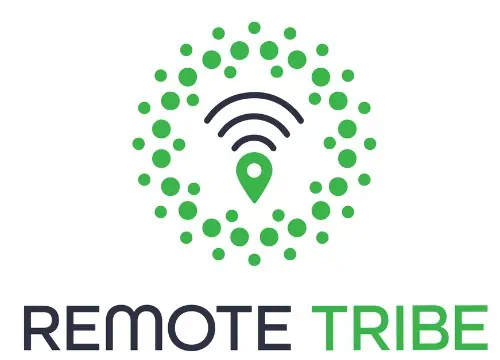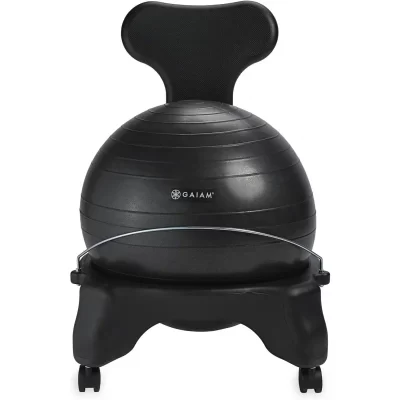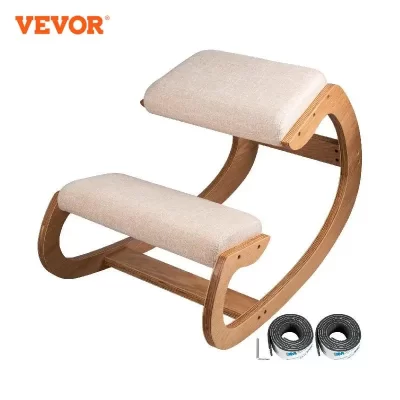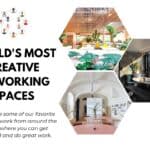In today’s fast-paced work environment, the right office furniture is more than just a luxury—it’s a necessity for ensuring both comfort and productivity. With many options available, selecting the ideal furniture can be overwhelming.
This guide will help you navigate the choices and create a workspace that enhances well-being and efficiency. In today’s dynamic work environment, the right office furniture is not just a luxury – it is an essential element to ensure comfort and productivity. With the wide range of options available, choosing the ideal office furniture can be a daunting task.
The goal of this guide is to help you navigate the options and offer you insight into creating a workspace that increases well-being and efficiency.
1. Ergonomics: The Foundation of Comfort
Ergonomic design is crucial for maintaining comfort during long working hours. An ergonomic chair should support the natural curve of your spine, have adjustable seat height, and provide lumbar support. Look for chairs with adjustable armrests and a recline function to accommodate various working positions and postures.
For desks, ensure that the height allows your arms to rest comfortably while typing, with the keyboard positioned at elbow height. Adjustable standing desks offer flexibility, allowing you to alternate between sitting and standing to reduce strain and improve circulation.
Ergonomics is more than just the right chair or desk height; it’s about creating a workspace that supports natural posture and reduces strain. An ergonomic chair should have an adjustable lumbar support that adapts to the curve of the lower back and allows long hours of comfortable sitting.
- Seat depth adjustment: Make sure the seat depth is adjustable to support your thighs without restricting circulation.
- Seat material: Choose a breathable fabric or mesh for better airflow and comfort during long periods of sitting.
- Keyboard and mouse placement: Place the keyboard and mouse at a height where your elbows are at a 90-degree angle to avoid strain on your shoulders and wrists.
- Monitor placement: The top of the monitor should be at or just below eye level to prevent neck strain.
2. Desk Size and Layout: Finding the Right Fit
The size of your desk should reflect your needs and the space available. A desk that is too small can lead to clutter and discomfort, while one that is too large may be overwhelming. Consider a desk with built-in storage options to keep essentials within reach and reduce clutter.
The layout of your workspace is also important. Position your desk near natural light if possible, as this can boost mood and productivity. Ensure that there’s enough space to move around comfortably and that your chair can swivel easily to access different areas of your workspace.
The desk size should accommodate not only your primary work needs but also other equipment such as printers, telephones or secondary monitors. A desk that fits well into your workspace can increase your efficiency by providing enough space to work without feeling cramped.
- Adjustable-height desks: Consider an adjustable-height desk for different tasks, such as writing or working on the computer.
- L-shaped desks: For larger spaces, L-shaped desks provide more surface area and can separate different work zones.
- Corner tables: Use corner spaces effectively with corner tables that maximize available space.
3. Storage Solutions: Keeping Your Workspace Organized
Effective storage is key to maintaining a productive work environment. Choose filing cabinets, shelves, and drawer organizers that suit your needs. Modular storage systems can be customized to fit your workspace and personal preferences.
Consider the accessibility of frequently used items. Keep essential tools and documents within arm’s reach to minimize interruptions and maintain workflow. Use cable management solutions to keep cords and cables organized and out of sight.
Effective storage solutions go beyond basic filing cabinets. Modular storage systems can be adapted to specific needs, allowing for efficient use of space and better organization.
- Vertical storage: Use vertical space with wall shelves or cabinets to keep floor space clear.
- Desk Organizers: Invest in desk organizers for stationery, documents and other small items to keep your workspace tidy.
- Cable management: Use cable clips and sleeves to prevent tangles and create a cleaner look.
If you want more digital nomad guides like these, sign up for our free newsletter and get upcoming articles straight to your inbox!
Subscribe to our Newsletter
Get The Latest News On Digital Nomad Lifestyle, Remote Working Communities
And Much More.
100% spam free. We never share your email address. Unsubscribe anytime!
4. Lighting: Enhancing Visibility and Reducing Eye Strain
Proper lighting is vital for reducing eye strain and creating a comfortable working environment. Invest in adjustable desk lamps that provide focused light without causing glare on screens. Choose lighting with adjustable brightness settings to adapt to different tasks and times of day.
If possible, maximize natural light in your workspace. Position your desk near windows and use blinds or curtains to control the amount of light and reduce glare. Consider using daylight-simulating bulbs to mimic natural light, which can help regulate your circadian rhythm and boost alertness.
Lighting plays a vital role in reducing eye strain and maintaining focus. Different types of lighting can be used for different tasks, such as focused lighting for reading tasks and general ambient lighting for general lighting.
- Work lighting: Adjustable table lamps with dimmable functions allow you to focus the light exactly where it is needed.
- Ambient lighting: Provide sufficient general lighting to complement task lighting and reduce eye strain.
- Color temperature: Choose lighting with a color temperature around 4000-5000K for a balanced, natural lighting effect.
5. Personalization: Adding a Touch of Inspiration
Lorem ipsum dolor sit amet, consectetur adipiscing elit. Ut elit tellus, luctus nec ullamcorper mattis, pulvinar dapibus leo.
Personalizing your workspace can enhance comfort and make it more inviting. Choose decor and accessories that reflect your style and preferences. Adding plants, artwork, or motivational quotes can make your office a more enjoyable place to work.
However, avoid over-cluttering your desk with too many personal items, as this can lead to distractions. Instead, find a balance that allows you to express yourself while maintaining an organized and efficient workspace.
Customizing your workspace helps create a more pleasant and motivating environment. It can also reflect your personality and values and contribute to a positive work atmosphere.
- Ergonomic accessories: Add ergonomic accessories such as a chair support cushion or a stylish yet functional desk organizer.
- Inspirational boards: Use cork or magnetic boards to display inspirational quotes, photos or goals.
- Plants: Incorporate low-maintenance plants to improve air quality and add a touch of nature to your workspace.
6. Quality and Durability: Investing in Long-Term Comfort
Quality furniture might come with a higher upfront cost, but it’s an investment in your long-term comfort and productivity. Look for furniture made from durable materials that can withstand daily use. Check warranties and return policies to ensure you’re covered if issues arise.
Consider adjustable features and modular designs that can adapt to your changing needs. Investing in high-quality furniture will not only improve your comfort but also save you money in the long run by reducing the need for frequent replacements.
Quality office furniture isn’t just about instant comfort; it is also a long-term investment. Durable materials and construction ensure that the furniture will withstand daily use and last for years.
- Choice of material: Choose solid wood or quality metal frames for long life. Avoid cheaper materials that can wear out quickly.
- Warranties: Look for products with comprehensive warranties that cover any potential defects or problems.
- Adjustable Features: Invest in furniture with adjustable features that can adapt to your changing needs over time.
7. Health and Safety: Prioritizing Well-Being
Your office furniture should support your overall health and safety. Ensure that your chair and desk promote good posture to prevent musculoskeletal issues. Consider additional accessories like footrests, wrist supports, and monitor stands to further enhance ergonomic benefits.
Regular breaks and stretches are also important. Set reminders to stand up, move around, and stretch to counteract the effects of prolonged sitting. Investing in furniture that encourages movement, such as a height-adjustable desk, can also support a healthier work routine.
Workplace health and safety goes beyond ergonomics. It involves creating an environment that promotes overall well-being, such as incorporating elements that encourage movement and good posture.
- Footrests: Use footrests to support your legs and reduce pressure on your legs and lower back.
- Wrist rests: Use wrist rests to maintain proper hand position and reduce strain while typing.
- Monitor stands: Use monitor stands to ensure your screen is at the correct height, reducing neck and back strain.
Conclusion
Choosing the right office furniture involves balancing comfort, functionality, and personal preference. By focusing on ergonomics, storage solutions, lighting, and quality, you can create a workspace that enhances productivity and supports your well-being.
Remember, your office is more than just a place to work—it’s a space that should inspire and support you every day. Again, investing in the right office furniture isn’t just about immediate comfort, it’s about creating an environment that supports long-term productivity and health.
Emphasize the importance of regularly reassessing and adapting the workspace to meet evolving needs and preferences. Encourage readers to take a hard look at their current workspace and consider implementing some of the tips listed. Offer additional resources or tools, such as office furniture assessment checklists or links to ergonomic assessments
Your Travel Resources Handy In One Place 🗺️
🧳 Travel Insurance
Enjoy peace of mind during traveling and don’t leave your country without good travel insurance. We recommend Insured Nomads or Genki for international travel insurance.
💰Travel Finances
Get your travel finances smart and straight with Wise or Revolut.
🏨 Accommodations
For a short stay check out Booking or Agoda. Staying longer? Take a look at the offers at Airbnb. Hostels are the cheapest option that you can explore at Hostelworld.
🏡 Recommended places for long-term stay
Wanna know the accommodations where we lived during our digital nomad journey? Check out the places we enjoyed the most!
🎫 Book tours
Are you up for taking part in epic guided tours? Book ones you like using GetYourGuide or Viator.
🚗 Rent a car
To find great rental car deals check out Rental Cars and get ready for your car trip!
✈️ Book a flight
For the hottest deals check out Skyscanner, Kayak, Google Flights or WayAway.
🛡️ VPN
To stay safely connected while traveling, don’t forget about a good VPN. We recommend Surfshark or NordVPN.











